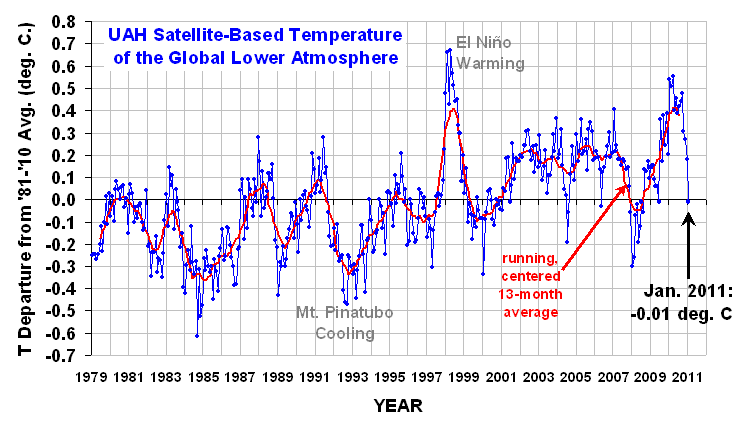This winter is on track to become the coldest for the nation as a whole since the 1980s or possibly even the late 1970s. According to AccuWeather.com Chief Long Range Forecaster Joe Bastardi, three or four out of the next five winters could be just as cold, if not colder.
He is worried that next winter, for example, will be colder than this one.
Bastardi adds that with the U.S. in the middle of one of its worst recessions in its history and the price of oil in question, he is extremely concerned about the prospect for more persistent cold weather in the coming years putting increased financial hardship on Americans.
"Cold is a lot worse than warm," Bastardi said, "and that's why your energy bill goes up during the winter time: because of the fact that it takes a lot to heat a house."
While there are many different factors that are playing into Bastardi's forecast, one of the primary drivers is La Niña and the trends that have been observed in winters that follow the onset of a La Niña.
Current La Nina Signals More Cold Winters Ahead
La Niña occurs when sea surface temperatures across the equatorial central and eastern Pacific are below normal. La Niña and its counterpart, El Niño, which occurs when sea surface temperatures of the same region are above normal, have a large influence on the weather patterns that set up across the globe.
The current La Niña, which kicked in this past summer, is unprecedented after becoming the strongest on record in December 2010. Bastardi thinks this La Niña will last into next year, though it will be weaker, and will not disappear completely until 2012.Here's the latest satellite measure of the earth's temperature anomaly from one of the keepers of the records at the University of Alabama-Huntsville, Dr. Roy Spencer:
According to Bastardi, studies over the past 100 years or so show that after the first winter following the onset of a La Niña, the next several winters thereafter tend to be colder than normal in the U.S.
He says the first winter during a La Niña tends to be warm. The next winter that follows is usually less warm, and the winter after that is usually cold.
"There's a natural tendency for that to happen because of the large-scale factors," Bastardi commented. "What's interesting about what we're seeing here is that [the current La Niña] is starting so cold."
Temperatures this winter so far are averaging below normal across much of the eastern two-thirds of the country.
He adds, "If the past predicts the future, then the first year La Niña is warmer than the combination of the following two."
He said that with the exception of the winters of 1916-1917 and 1917-1918, the first year of every moderate or stronger La Niña available for study has featured a warmer-than-normal winter from the Plains eastward. This winter, it has been colder than normal.
Taking a look at one of the exceptions, the La Niña winter of 1916-1917, colder-than-normal conditions were observed across the northern part of the Plains and East (not the South). Bastardi said that never before have colder-than-normal conditions been observed across the South during a first-year La Niña winter, as has been the case this winter.
If this winter, which has been colder than normal across the eastern two-thirds of the country, is historically supposed to be the warmest of the next three winters for the U.S., according to Bastardi, we have some frigid times ahead....MORE
…although this, too, shall pass, when La Nina goes away.
